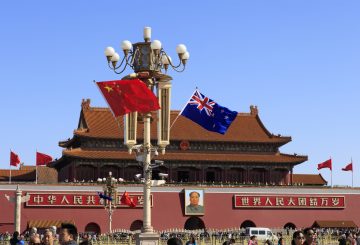Các bác sĩ cấp cao tại các bệnh viện công ở New Zealand đã bỏ phiếu chống lại yêu cầu Te Whatu Ora trả tiền bảo hiểm y tế tư nhân của họ. Đề xuất nhận được hơn 40% sự ủng hộ từ các bác sĩ, nhưng không đảm bảo được đa số cần thiết để thông qua.
Nhu cầu về bảo hiểm y tế tư nhân ngày càng tăng ở New Zealand do những khó khăn ngày càng tăng mà các bệnh viện công phải đối mặt. Gần đây, một dịch vụ iwi Bay of Plenty đã mua bảo hiểm y tế tư nhân cho nhân viên của mình, nói rằng họ cảm thấy không có lựa chọn nào khác.
Cuộc bỏ phiếu chặt chẽ phản ánh sự thất vọng của các thành viên của Hiệp hội các chuyên gia y tế được trả lương. Sarah Dalton, giám đốc điều hành của hiệp hội, cho biết một số thành viên lo lắng về việc tiếp cận dịch vụ chăm sóc sức khỏe thông qua hệ thống công cộng. Tuy nhiên, đề xuất đã thất bại một phần vì nó mâu thuẫn với sứ mệnh của công đoàn là vận động cho chăm sóc sức khỏe công cộng chất lượng cho tất cả mọi người.
Dalton cũng lưu ý rằng nhiều bác sĩ và nha sĩ cao cấp, với mức lương cao, có khả năng tự mua bảo hiểm y tế tư nhân. Đề xuất này không phải là điều mà hiệp hội đang xem xét, nhưng được các thành viên đưa ra trong một cuộc họp thường niên vào cuối năm 2023 như một cách để bày tỏ sự thất vọng của họ với Te Whatu Ora với tư cách là một nhà tuyển dụng.
Một vấn đề khác được nhấn mạnh là thiệt hại cao mà làm việc trong lĩnh vực chăm sóc sức khỏe gây ra cho các cá nhân, dẫn đến mệt mỏi và kiệt sức. Dalton cho biết hiệp hội cần tập trung nhiều hơn vào các vấn đề sức khỏe và phúc lợi.
Tổ chức Y tá New Zealand đề cập rằng các thành viên của nó đã thảo luận về bảo hiểm y tế tư nhân, nhưng nó chưa bao giờ được đề xuất như một yêu cầu bồi thường. Hiệp hội Bệnh viện Phẫu thuật Tư nhân thừa nhận rằng các chương trình sử dụng lao động đã thúc đẩy tăng trưởng chính sách bảo hiểm trong những năm gần đây, nhưng làm rõ rằng các bệnh viện phẫu thuật tư nhân không tuyển dụng bác sĩ, vì vậy mô hình của họ khác với các bệnh viện công. Hiệp hội không có lập trường tập thể về việc cung cấp bảo hiểm y tế tư nhân và không thu thập dữ liệu về nó.





























































